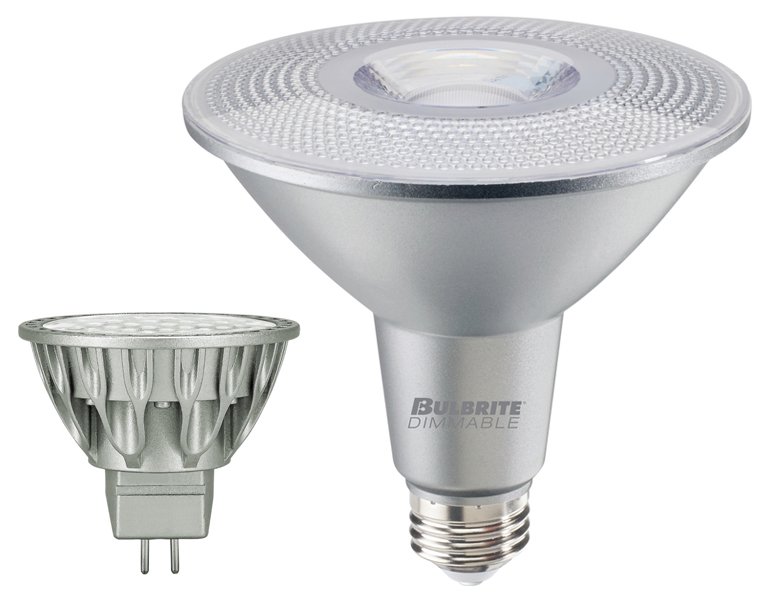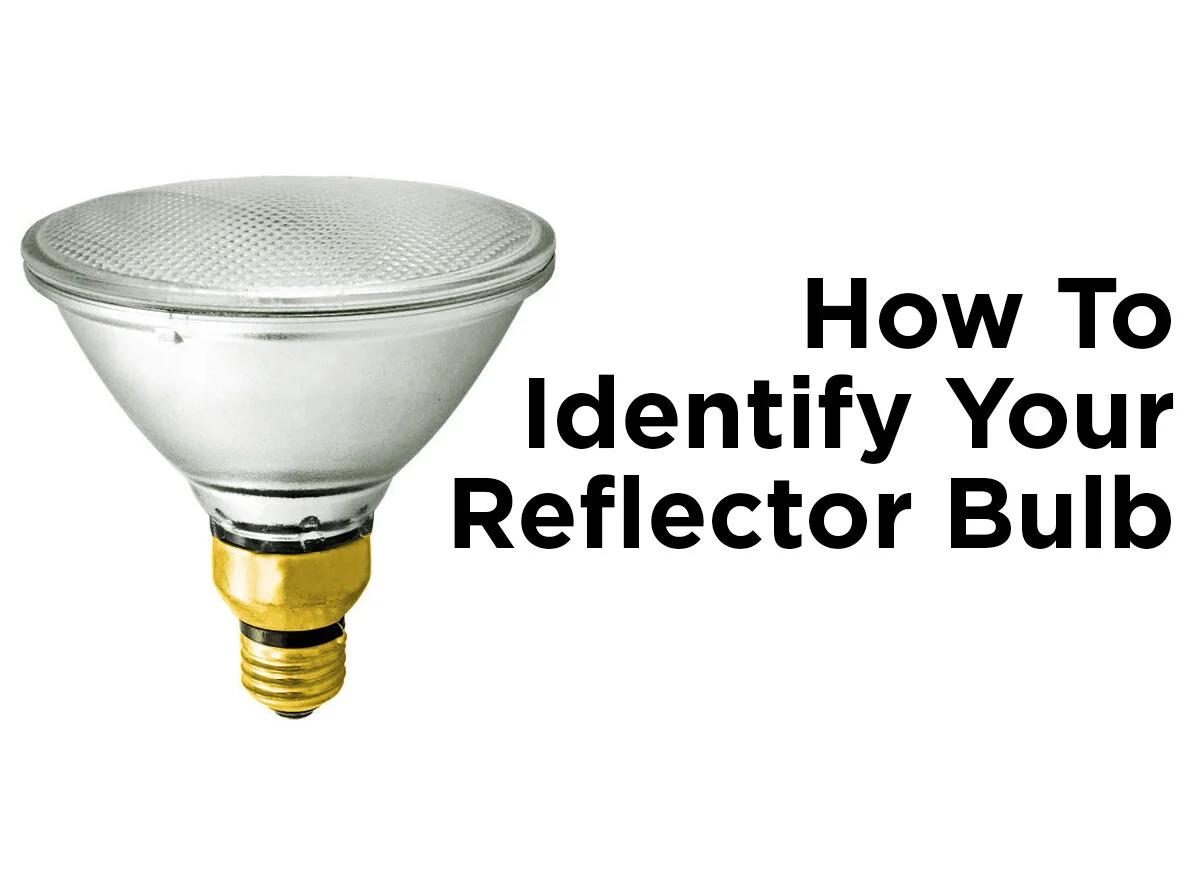Beam Angle Explained
Updated 12/14/23 by Angela Rogers
Reflector bulbs are more than just floodlights and spotlights. Like any light bulb, they come in shapes and technologies to fit any application. Two cases in point are the PAR and the MR16. These common bulbs, whether halogen, CFL, or LED, are highly specified, containing engineered surfaces that control the beam of light to an angle so precise it takes seven different classifications just to explain their possible uses!
What Are PARs and MR16s?
PAR and MR16 bulbs are fairly common bulbs that are used in both homes and businesses. PAR (or Parabolic Aluminized Reflector) bulbs are flood lights with a flat lens. They use a parabolic 'mirror' inside the bulb to concentrate the light into a more concise beam (more on that later). These bulbs are primarily used for outdoor lighting due to their high output, wide light coverage, and durable housing. You can learn more about specific PAR sizes and base types here.
MR16s are a specific size of MR (or Multifaceted Reflector) lamp that measures 2-inches in diameter. They are generally used in track lights, recessed light fixtures, and landscape lighting as directional lighting. MR16 lamps can have either a G5.3 base, which is standard, or a GU10 base that twists and locks into place. You can read more about MR lamps here.
What Is Beam Angle and Why Is It Important?
In lighting, the beam angle is the measurement of how light is distributed from the light source to the object or area being illuminated. Also be referred to as "beam spread", its essentially the spread of light emitted from a light source.
Beam angles play a very important part in lighting design. They are used to determine how many lamps or light fixtures are needed to properly light a space. Think of it like the width of a flashlight beam. A narrow beam angle will provide a more focused and concentrated light, great for highlighting specific areas or objects. On the other hand, wider beam angles will spread the light out over a larger area, ensuring more overall coverage.
So, depending on the task or the ambiance you want to create, choosing the right beam angle is crucial. Whether you need pinpoint accuracy or broad illumination, understanding beam angle helps you find the perfect lighting solution.
Different Types of Beam Angles
There are a variety of different beam angles, ranging from narrow beam angles to very wide beam angles. Beam angels will vary depending on the type and shape of the bulb, but for this post we will focus on MR16s and PAR lamps.
Very Narrow Spot (VNSP)
Like the very narrow spot, the narrow spot is most popular in commercial applications. At 8 to 15 degrees for an MR16 or 10 degrees or less for a PAR lamp, the reflector casts a beam slightly less focused than a VNSP. Look for bulbs with an NSP beam angle in retail settings highlighting a special or sale item or in landscape bullets illuminating a sign or garden feature.
Narrow Spot (NSP)
Like the very narrow spot, the narrow spot is most popular in commercial applications. At 8 to 15 degrees for an MR16 or 10 degrees or less for a PAR lamp, the reflector casts a beam slightly less focused than a VNSP. Look for bulbs with an NSP beam angle in retail settings highlighting a special or sale item or in landscape bullets illuminating a sign or garden feature.
Spot (SP)
The spot, though primarily used in commercial applications, also shows up in homes from time to time. At 16 to 22 degrees for an MR16 or 11 to 15 degrees for a PAR lamp, the reflector casts a medium-sized beam. Bulbs with an SP beam angle are used in stores to highlight a special or sale area or outdoors to illuminate an architectural feature.
Narrow Flood (NFL)
Businesses and homeowners alike find uses for the narrow flood. At 23 to 32 degrees for an MR16 or 16 to 25 degrees for a PAR lamp, this reflector casts a medium-wide beam. Stores use an NFL beam angle to highlight a display table, while homes might use this bulb in recessed eyeball lights to illuminate a painting over a fireplace mantle.
Flood (FL)
This true "floodlight" has a wide variety of applications. At 36 to 45 degrees both MR16s and PARs, the reflector casts a wide beam. Bulbs with an FL beam angle can be seen in everything from pendant lights in coffee shops to recessed lights in living rooms.
Wide Flood (WFL)
Need a lot of light? There are worse options than the wide flood. At 46 to 59 degrees for an MR16 or 50 degrees or more for a PAR lamp, the wide flood has a dispersed beam to cover a large area. Bulbs with a WFL beam angle are common in many general illumination applications from motion-sensing lights above garage doors, to recessed cans in auditoriums and movie theaters. In commercial buildings, WFL bulbs are commonly used for ambient lighting.
Very Wide Flood (VWFL)
The very wide flood finds its way into specialty applications, more often than not. At over 60 degrees for an MR16, this reflector casts an extremely wide beam. Bulbs with a VWFL beam angle are used to illuminate without highlighting any particular object or area. They're good options for outdoor flood lighting and low-ceiling recessed lights.
Additional Tips for Choosing the Right Beam Angle
Here are a few other tips that can help you find the best beam angle for your applications. When shopping, keep in mind that these designations vary slightly from manufacturer to manufacturer. Some brands, like Ushio, throw them out altogether for their own, simpler system of "narrow," "medium," and "wide." If you run across this, just look to see if the degrees are listed on the packaging. That will give you a better idea of how large or small the beam spread is.
Also note that just because a bulb may have a commercial application, that doesn't mean you can't use it in your home. Flood bulbs are widely used in residential buildings. MR16 and PAR lamps can be used for both accent lighting and general lighting, and are commonly used in recessed cans, track lights, landscape bullets, and much more.
For help deciding with beam angle is best for your residential or commercial applications, call 1-800-624-4488 to speak with one of our lighting experts.

















